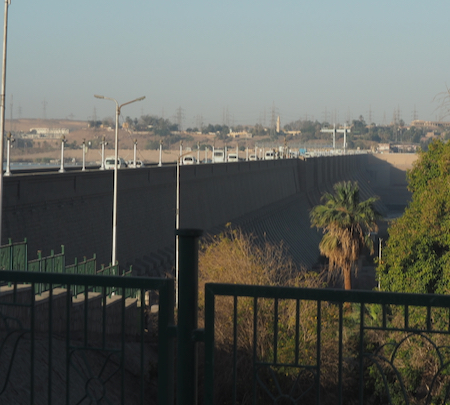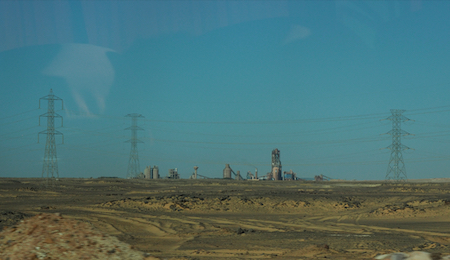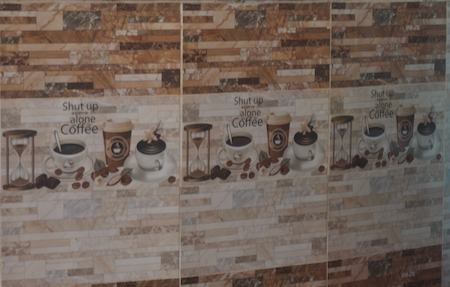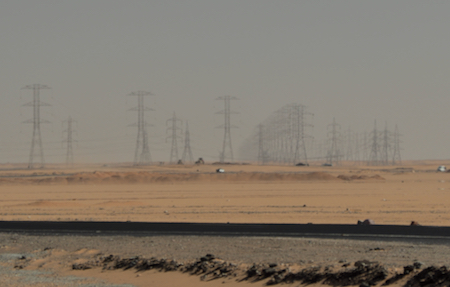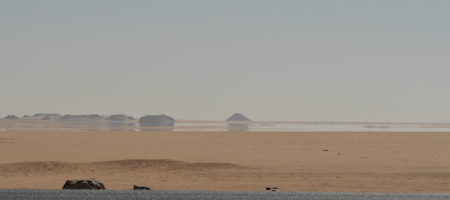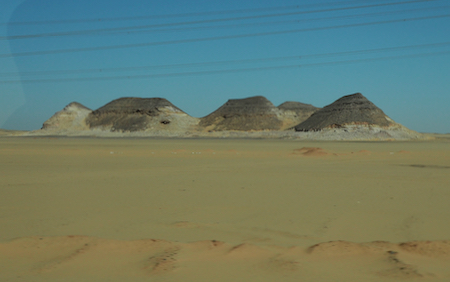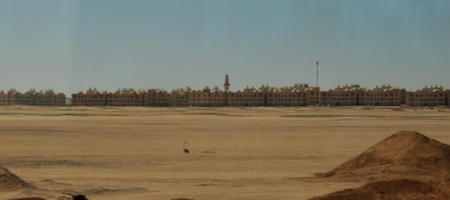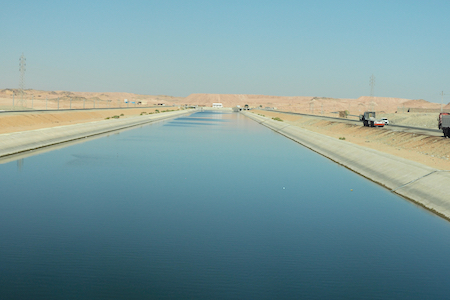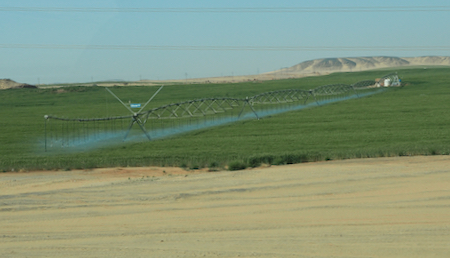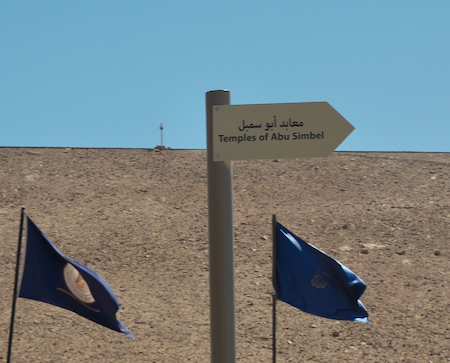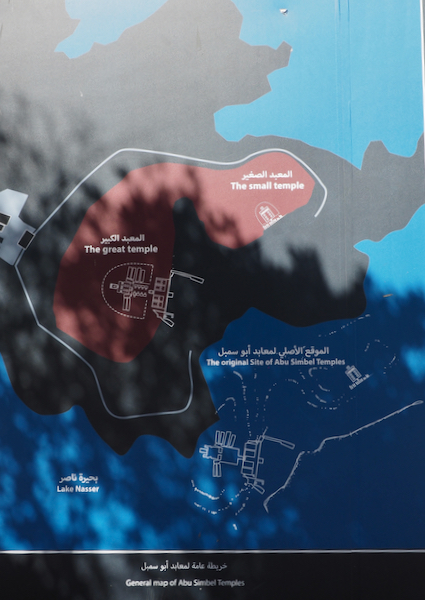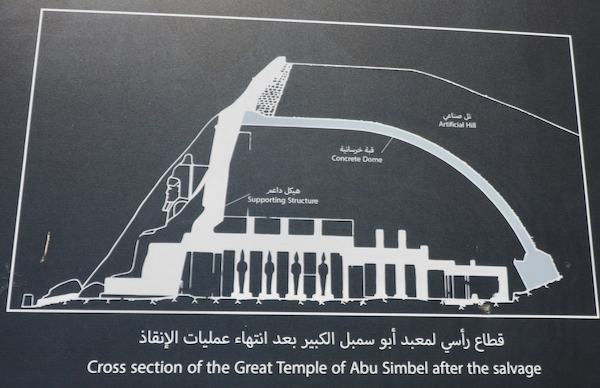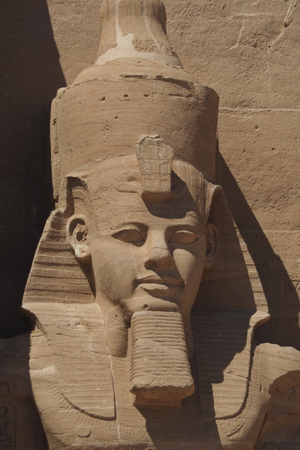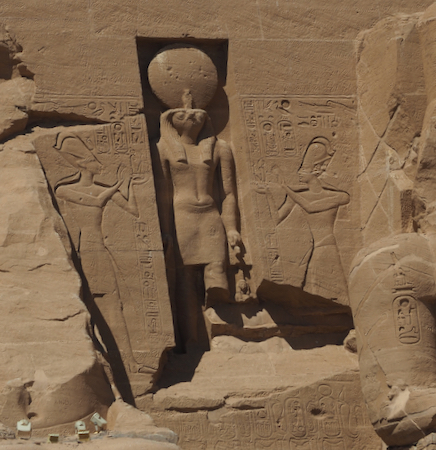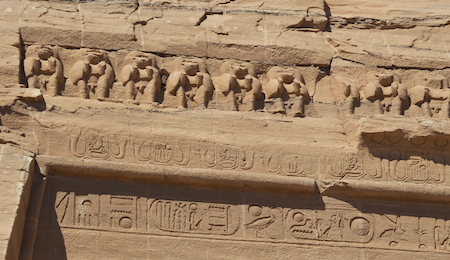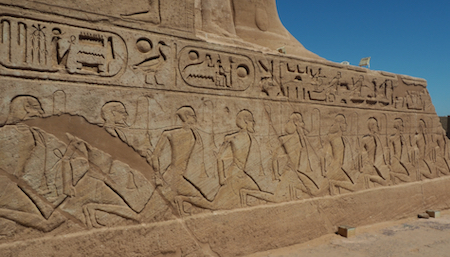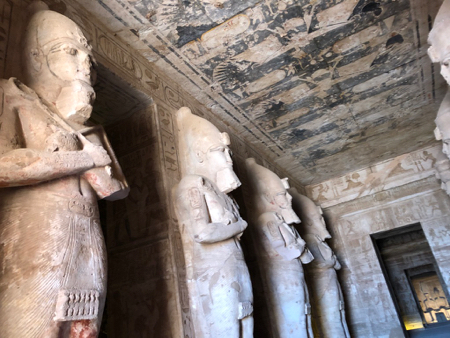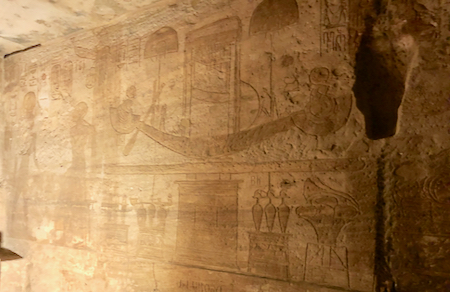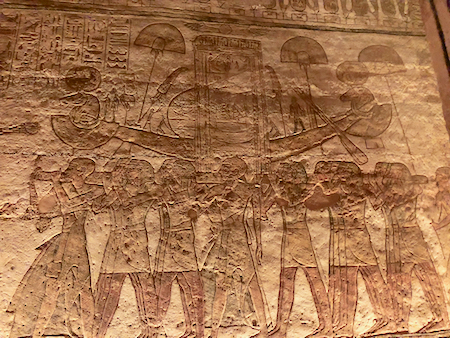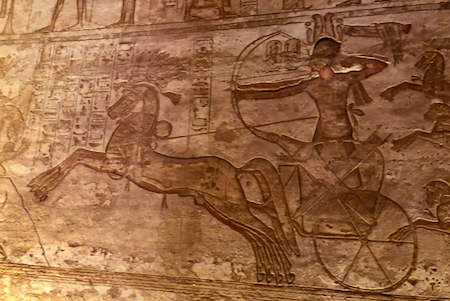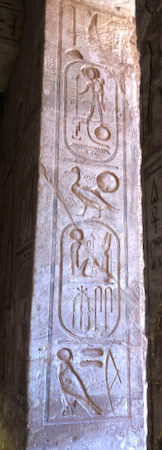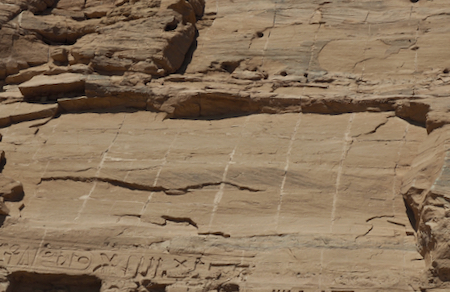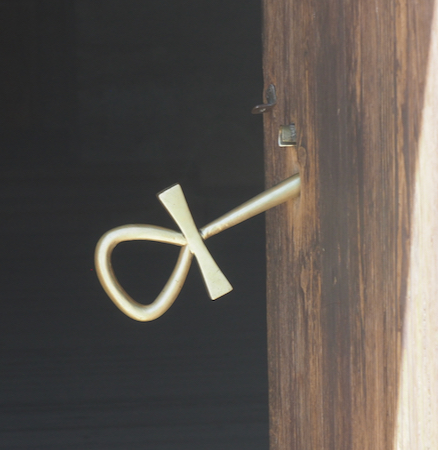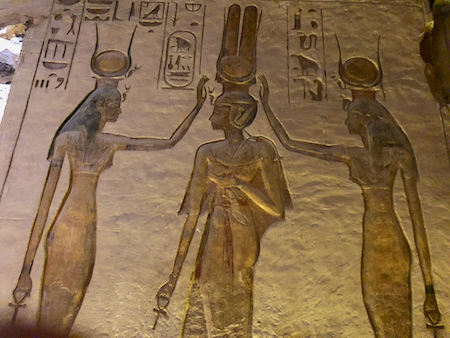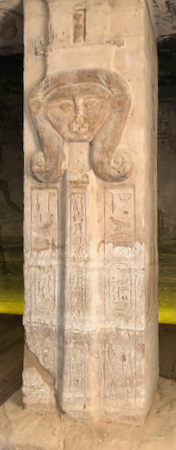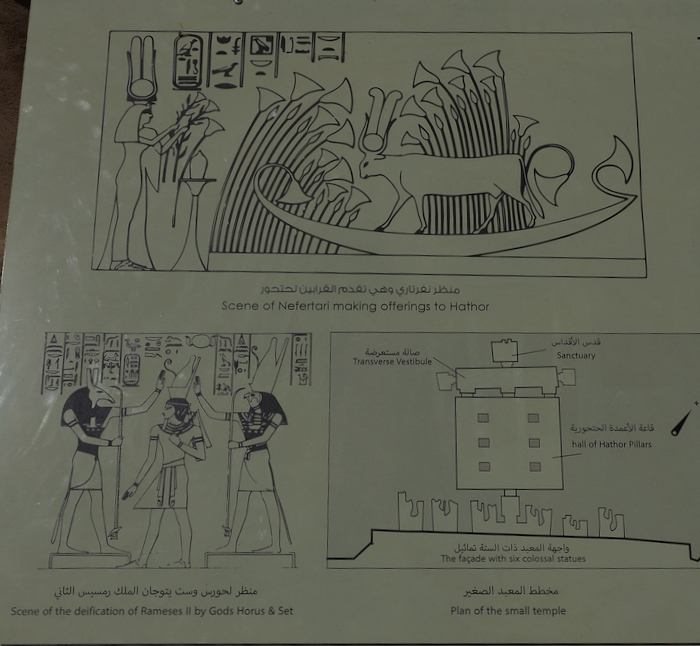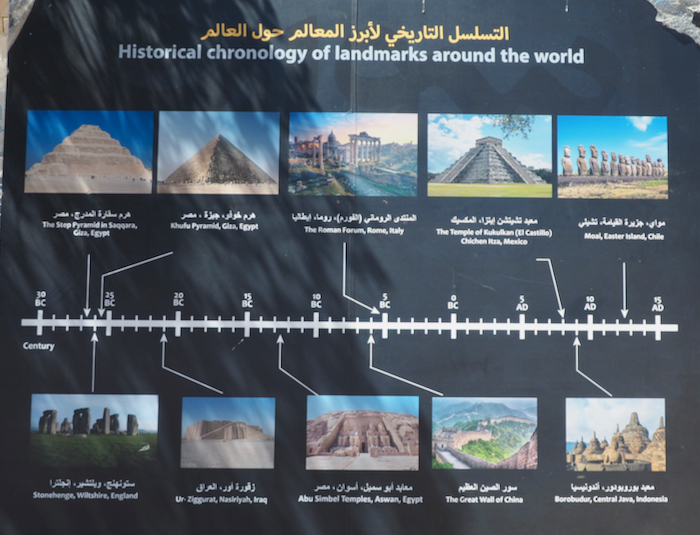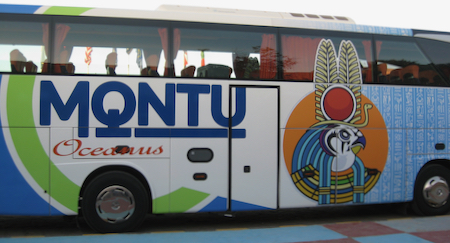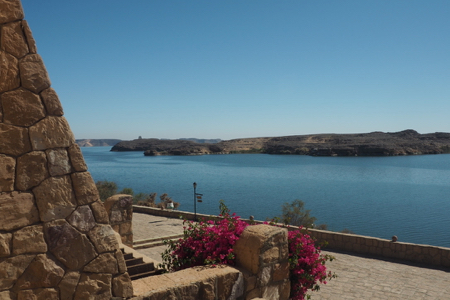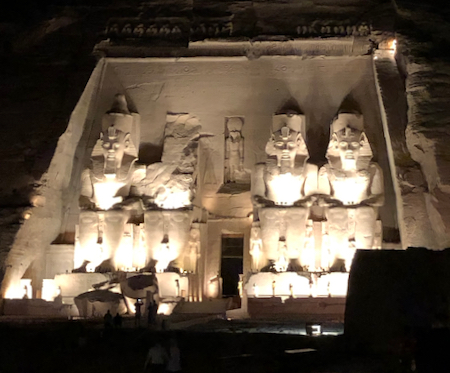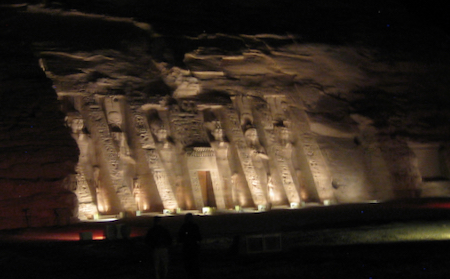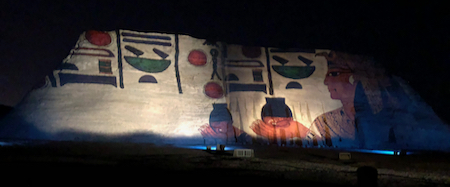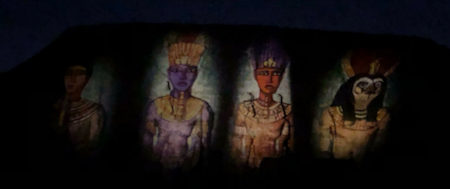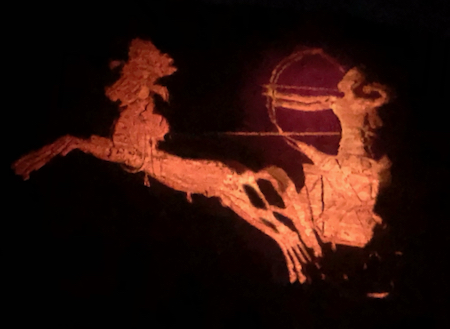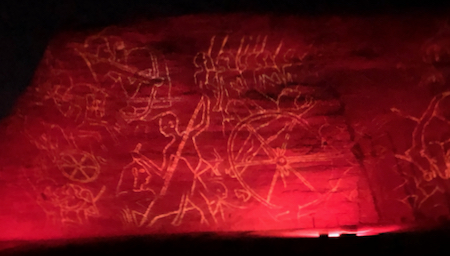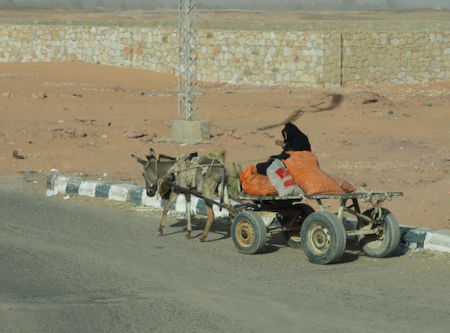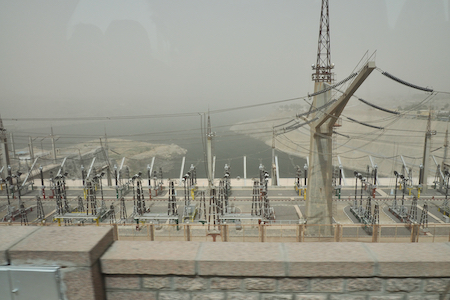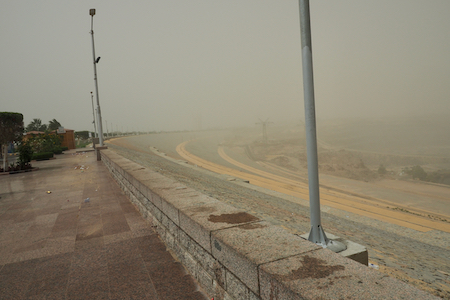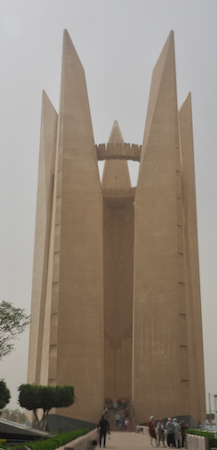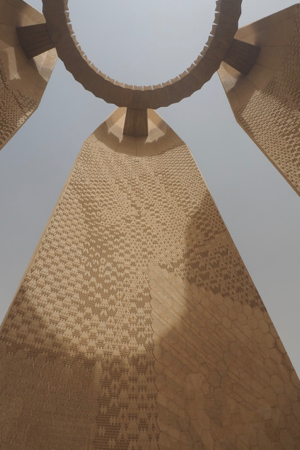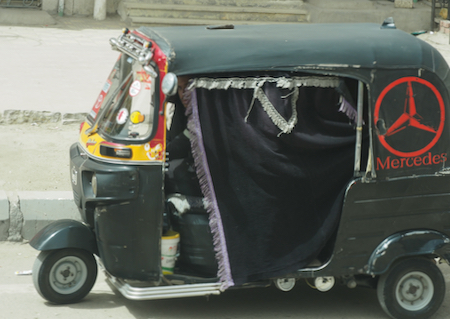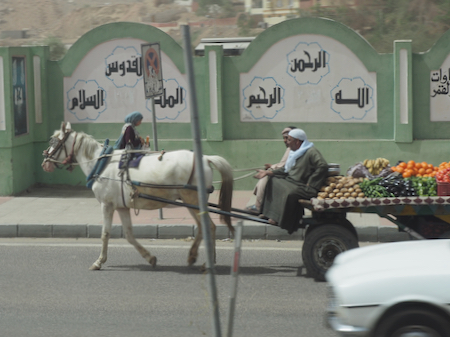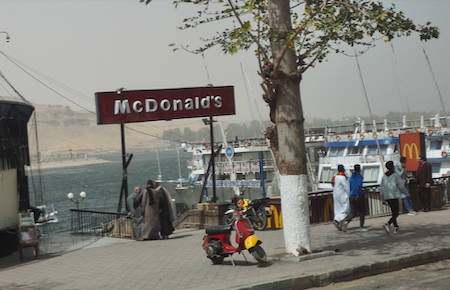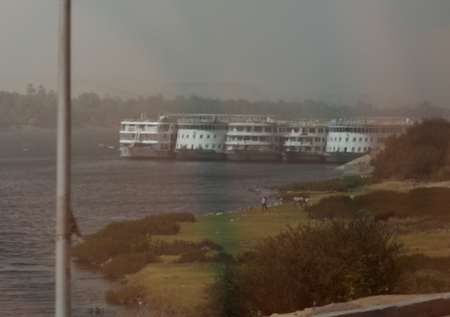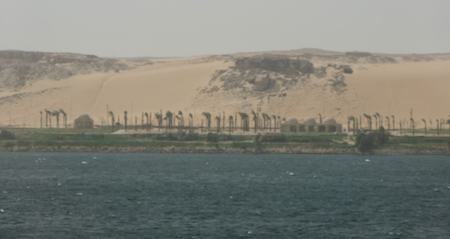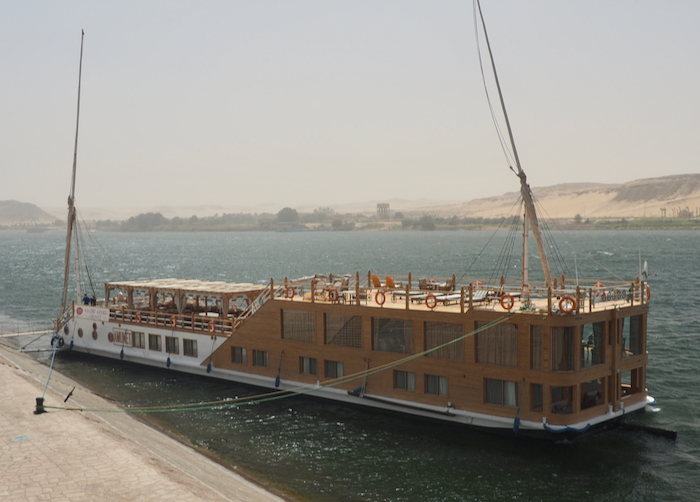Wed., 3/2/22 - Aswan to Abu Simbel
Up early and on the bus at 7 AM for the four-hour drive to Abu Simbel. On the bus we watched the documentary about how UNESCO called on the world to save the temples from the fast rising water behind the Aswan High Dam. From 1960 to 1980 many countries came to the rescue. Abu Simbel was moved, block by block, to higher ground and is only slightly off its original orientation so that the inner temple gets sunrise light one day later.
Aswan Low Dam
A mining operation in the desert
Wall at the coffee shop where we made our "comfort" stop
Power lines across the desert
A real mirage
Mounds left from ancient volcanic eruptions
The Egyptian government set up a project in 1995 to build a 300 km (186 miles) canal into the Sahara from Lake Nassar to West Toshka to bring water to cultivate 600,000 acres of land. This is part of the very large New Valley Governorate, an area that includes nearly half of Egypt. We saw hundreds of circle/pivot irrigators in fields where wheat and alfalfa were growing. 50% of the fields are being given to recent graduates of agriculture programs to work as farms. New housing communities are also appearing.
Miles long wall fronting the area of the New Valley Governorate
New housing for agricultural workers in the New Valley Governorate
Large irrigation canal
Central pivot irrigation at work in the desert
A welcome sign!
Abu Simbel was built by Rameses II (Rameses the Great) at the southern border of his domain. It was built in territory that belonged to the Nubian people. Nubia was treasured for its gold, all of which was mined and used by the Egyptian rulers. The Great Temple was completed about the 24th year of Rameses II's reign - about 1265 BCE. It was dedicated to the gods Amun, Ra-Horakhty, and Ptah and also to the deified Rameses
Rameses II ruled in the 13th century BCE for 67 years and died at age 97. He had lots of time to build things and fathered 155 children! Abu Simbel was rediscovered under the desert sand in 1814.
Incredibly, there was nearly no one but our group at the site! What an incredible change from the crowds in January/February 2011. We were the only ones in the large temple of Rameses II and the small temple of his beloved wife Nefertari and the goddess Hathor. It was wonderful to enjoy it all without crowds.These are links to two very interesting movies about the moving of Abu Simbel to save it from being entirely covered by the waters of Lake Nasser: Long movie; Shorter movie
Map of the Abu Simbel area
Temple of Rameses II - all four statues are of Rameses II
Head on one of the statues of Rameses II
Ra-Horakhty or Horus in a niche above the entrance
Frieze of 22 baboons worshiping the rising sun above the statues
A row of captives tied together - at the entrance to the Temple of Rameses II
Smaller statues of wives and children at the feet of the large statues of Rameses II
Eight (four on each side) Osirid columns line the hypostyle hall
Sacred boat of Amun and Ra-Horakhty
Sacred boat (or barque) of Amun and Ra-Horakhty in a procession
Rameses II in his chariot shooting arrows at his fleeing enemies at the Battle of Kadesh (Qadesh) 1274 BCE
Cartouches of Rameses II
The "Small Temple" of Abu Symbol was built by Rameses II to honor his wife Nefertari and Hathor, the goddess of motherhood, music, fertility, and love.
The 50+ ft. statues in front are of Rameses II (4 of them) and Neferteri (remaining 2). It is unique that the figures of Nefertari are the same size as Rameses. The smaller figures standing between their legs represent princes and princesses.
Temple of Hathor and Nefertari (Small Temple of Abu Simbel) - the statues depict Rameses II and Queen Nefertari
Marks showing where blocks of stone had been sawed and reassembled on the new site.
Key to the temple door in the form of the Ankh symbol - the key of life - represents eternal life in Ancient Egypt
Deification of Nefertari by Hathor (left) and Isis
Nefertari making offerings to Hathor (the cow goddess)
The goddess Hathor
Interesting chronology
After our wonderful visit to the temples of Abu Simbel, we checked into our hotel and attended a talk about Nubian history and the Nubian's view of the construction of the Aswan High Dam. When Nassar decided to build the new Aswan High Dam it meant Nubian farmers who worked the fertile fields along the Nile would lose their livelihood and have to be relocated. They were promised houses and new fields but that meant slowly rebuilding and work to create new fields.
Before dinner, we returned to Abu Simbel to watch the sound and light show that tells the story of Rameses II and Nefertari. It was very good.
Our lovely bus - not so nice if you have to sit in the seat overlapped by Horus' feathers
View from our hotel room
Temple of Rameses II at night
Temple of Hathor and Nefertari at night
Scenes from the light show
Scenes from the light show
Scenes from the light show - Rameses II shooting arrows at the Battle of Kadesh
Scenes from the light show
Thurs., 3/3/22 - Abu Simbel to Aswan
Today we drove back to Aswan to embark on our dahabeya for five nights on the Nile. On the ride, Mona talked about Egypt and the Aswan High Dam. In 1954 Nassar was made president and he initiated the process of turning the Suez Canal from British control (with them collecting the fees for passage through the canal) to Egyptian control. With that influx of money, he was able to improve electric power production by building the Aswan High Dam. Construction began in 1960 and was finished in 1970.
There are positives and negatives to the dam. The dam prevents the annual flooding that inundated villages along the river but it also prevents the river silt from fertilizing the fields. Crops can now be planted and watered year round but farmers have to spend big bucks on fertilizer. The lake (Lake Nasser) is a large area for evaporation in hot summer time which increases the humidity. Many more temples were lost (submerged) than were moved. 80% of electricity for Egypt is generated from the dam’s 12 turbines. Perhaps the biggest negative is that if an enemy were to bomb the dam, a large area of Egypt would be flooded and there would be no electricity. For this reason, the dam is heavily guarded by the Egyptian army.
The Soviet Union helped build the dam and there is a monument to Russia near the dam. It is in the shape of lotus petals.
Woman and donkey cart along the highway
Power plant of the Aswan High Dam
Aswan High Dam - it was very windy and visibility was greatly reduced by the blowing sand
Russian Memorial at the Aswan High Dam
Russian Memorial at the Aswan High Dam
Tuktuk
Vendors driving along the streets of Aswan
The Golden Arches are everywhere!
River boats docked five abreast at Aswan
Our dahabeya, the Amunet
We embarked our dahabeya, the Amunet, before lunch (see the link above for information about dahabeyas). The staff conducted a briefing and safety talk and then lunch was served.
The wind delayed our departure for a little while but we soon began our “sail” down the Nile. The Amunet "docked" for the night, along the bank of the river, with four other tourist boats.
The beef served at dinner was tender, juicy, and tasty.
| Return to Top | Return to Itinerary | Return to Trips page to view other trips | Return to Dreamcatcher Home Page |
